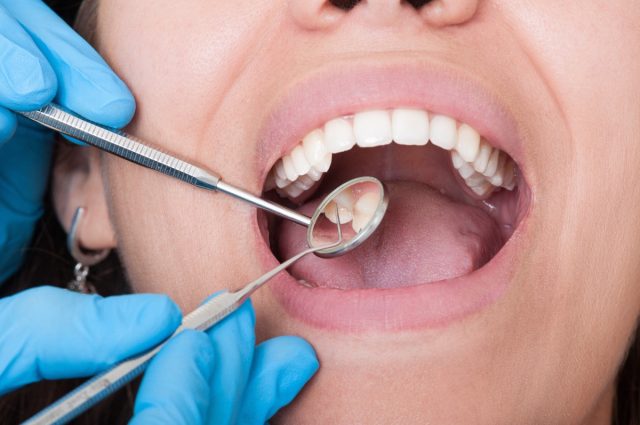
It is the filling of the prepared cavity (cavity) with an artificial filling material by correcting the loss of material caused by the cavity or fractures caused by cleaning caries that have occurred in the tooth.
Tooth decay
Today, dental caries is defined as a disease that occurs in dental tissues due to more than one reason. The main causes of dental caries are listed in the following items:
Causes of Tooth Decay:
- Bacterial plaque
- Microorganisms
- Personal factors (tooth structure, saliva composition, genetic structure, etc.)
- Carbohydrate foods (Sugar, flour, etc.)
- Time (the duration of food in the mouth)
How Do Our Teeth Rot?
Bacterial plaque formed by bacteria in the mouth can form acid from the residues of sugary and floury foods in the mouth. These acids, which dissolve the mineral tissue of the tooth, disrupt the structure of the enamel, causing the loss of material on the tooth, which we call caries.
dental caries; It can occur on the chewing surface of the tooth, at the interfaces of the teeth in contact with each other, or in the armpits of the teeth (closer to the gum). Browning or cavities on visible surfaces are easy to detect. Hidden caries between two teeth go unnoticed for a long time. X-ray diagnosis is also necessary for asymptomatic caries.
The decay that starts in the enamel tissue of the tooth progresses to the dentin tissue if left untreated. Dentin dissolves more easily than enamel and therefore caries progression is faster in dentin. In caries that have reached the dentin tissue, sensitivity may occur as a result of factors such as hot, cold, and sweet. This sensitivity goes away when the factor is removed. In this case, the treatment will be a large filling at best. However, if the pain has become continuous; It means that caries has advanced to the pulp chamber where the vascular-nerve package of the tooth is collected and root canal treatment is required.
Composite Filling
It is a plastic-based mixture containing silicon dioxide particles. Thanks to the various color options, its presence in the tooth is not noticed and therefore it is also called aesthetic-white filling. The material, which was used only in the anterior teeth for a period, has been strengthened by various methods and made suitable for molars as well. The filling material placed on the tooth using a special bonding agent is hardened with a light device and polished in the same session.
Composite Laminate Veneer (Bonding)
Bonding is used to repair broken and cracked teeth or to change shape and color, especially in front teeth. First, the color of the composite material to be bonded and the color of your natural tooth are harmonized. Then your tooth is slightly etched and roughened, a tape is applied here to ensure tight adhesion of the bonding material. After the composite material is applied, it is placed on the tooth and cured with a high-intensity light. It is then polished for a natural look. Bonding is effective in small areas because larger areas are prone to breakage.
They are aesthetic restorative procedures, which are mostly created by the dentist by processing the composite fillings layer by layer on the patient’s teeth, without removing any material from the surface of the anterior teeth. This application ends in a single session. However, due to the nature of the material used, discoloration may occur due to habits, and breakage may occur as a result of careless use. However, the repair of the problems can be done in a single session.
Porcelain Fillings (Inlay/Onlay)
Dark metal amalgam fillings or aged composite fillings may need to be replaced over time as leakage occurs at the junction of the filling and tooth. In addition, they can cause the teeth to crack and break with the deterioration of the harmony of the fillings. Tooth-colored inlay-onlay fillings are almost unnoticeable as they are very compatible with your natural tooth in color.
In addition to superior aesthetics, porcelain fillings provide optimum contact with the teeth. This filling is prepared outside the mouth in a laboratory environment. After the broken, rotten, or old-filled part of the tooth is removed, the measurement of the remaining healthy part is taken and sent to the laboratory. The healthy tooth tissue in the mouth is not touched. Porcelain fillings prepared on the model created in the laboratory provide aesthetic and functional integrity. When the patient comes to the next session, the polished porcelain filling adheres to the cavity.
The edge leakage of these special porcelain fillings, which is a material that is very close to the hardness of the tooth and compatible with the gingiva, is at a minimum level, therefore it is quite long-lasting.
Porcelain Laminate Veneer
Teeth about 0.5 mm. It is prepared by abrading from the front surfaces until Measurements are taken and porcelain structures are prepared by the technician. These porcelains are as thick as nails and resemble shells. They are attached to your natural teeth. They are colorless and close to transparent and therefore give a natural appearance by the shape, size, color, and length of the tooth bonded on it. porcelain veneers; They can be preferred as a solution to problems such as discolored, worn, or crooked teeth, staining, position and level differences, and gaps between teeth.
What kind of treatment is Porcelain Laminate Veneer?
Porcelain Laminate Veneer is very thin porcelain, which we also call leaf porcelain. It is the technique of bonding a specially prepared porcelain layer in the desired color, size, and form to the front of the tooth. It is sufficient for this application to cut an average of 0.5 mm from only the anterior face of the tooth. Sometimes processing can be done without cutting.
In the first examination, measurements are taken before the teeth are cut. With the model to be obtained from this measurement, a wax model is prepared in the laboratory. In the appointment set, the final state of the teeth can be shown in the patient’s mouth through the model. It can be ensured that the doctor and the patient can reach a consensus by evaluating the final state of the porcelain to be made.
After the patient’s consent is obtained, the measurement is taken and sent to the laboratory. After the rehearsals of the laminates prepared in the laboratory are completed in the clinic, the final decision is made for the ideal forms, and the process is completed by gluing the laminate porcelains.
What are the advantages of Porcelain Laminate Veneer?
In the following years, there is no color change caused by the structure of the porcelain. Since very little tooth tissue is cut in leaf porcelain, much more tooth tissue can be preserved.
How long can porcelain laminate veneer be done?
The preparation phase takes about 7-10 days. In cases where gingival adjustments are required, this period may be extended. After the preparations are completed and the teeth are cut, you can get your teeth in 7-10 days.
Is porcelain laminate veneer a painful procedure?
Since the enamel layer on the front surface of your teeth is cut, you may feel a slight hot-cold sensitivity. After your teeth are cut, you can feel rough surfaces in the front area with your tongue. For these reasons and for you to avoid aesthetic problems, temporary teeth are prepared and attached to you during the waiting period after your teeth are cut.
What is the lifespan of teeth made from leaf porcelain?
If the patient performs oral care regularly and comes to his regular check-ups for 6 months, he will not have any problems in this regard. Depending on the use, the duration may vary, it may be 20-30 years, or there may be patients who may experience problems in 5-6 years.
Full Porcelain Crowns
Full porcelain crowns are the closest option to the light transmittance of natural teeth with hardened porcelain that transmits light to different degrees. Full porcelain adheres to the tooth both mechanically and chemically. Full porcelain crowns are gingival-friendly materials due to their content.
Zirconium Crowns
With its high fracture strength and hardness, zirconia can be used successfully in anterior and posterior tooth deficiencies. The white color of the infrastructure metal in zirconia ceramics has eliminated aesthetic concerns. Thus, it has become possible to make both aesthetic and fracture-resistant crowns.
What is the Best Fill Type?
The same type of filling may not be suitable for everyone. The type of filling suitable for you is determined by the size of caries, your allergy to certain substances, and the area where the filling should be done.
How to Prevent Bruises?
The first thing to do is to go to the dentist every 6 months and apply his recommendations.
The acids produced by the food residues and plaque layer on the teeth can sometimes be neutralized by saliva alone. For this reason, it is useful to increase the flow of saliva by chewing sugar-free gum. Flowing, copious saliva has sufficient acid buffering capacity and intraoral rinsing. Saliva will remove food residues and dissolve sugars. But most of the time, saliva alone cannot fight cavities. This spontaneous defense may sometimes be insufficient in the face of rapidly progressing bruises.
The best way to combat cavities is to use a regular toothbrush and floss. The toothbrush plays the most important role in the mechanical removal of plaque. Brushing the tongue will also remove food residues. The cleaning of the dental interfaces can be fully achieved with the use of dental floss. In cases where the enamel is weakened but caries have not yet occurred, fluoride applications also strengthen the enamel and provide remineralization.
If your dentist thinks that you tend to cavities, he will try to reduce your risk by recommending special pastes and mouthwashes.

